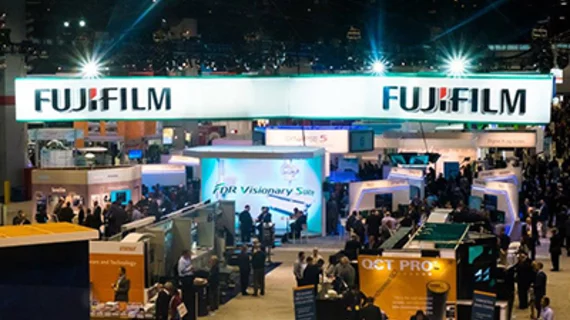Highly Focused Conference Attendance Helps Main Street Radiology Improve Speed and Collaboration
Lawrence Carl, MD, is the medical director for Main Street Radiology (MSR) in Queens, N.Y., a board-certified radiologist and assistant radiology professor at Weill Cornell. His medical director responsibilities include keeping an eye out for emerging technologies to positively impact workflow and patient care in outpatient radiology. To that end, Dr. Carl leads MSR administration and technology professionals to multiple educational events each year.
For Dr. Carl, the annual meetings of the Radiology Society of North America (RSNA), Healthcare Information and Management Systems Society (HIMSS), Society of Imaging Informatics (SIIM) and Radiology Business Management Association (RBMA) represent outstanding opportunities to evaluate advances in technology and provide improvements in quality and efficiency to patients and the referring physician community.
“As the medical director, I ensure that when our team attends trade shows, we look for ways to improve the practice’s speed, connectivity and collaborative capacity,” Dr. Carl says, adding that MSR continually prioritizes research of innovative tools to help advance care and improve patient outcomes” in the outpatient imaging market.
“We visit with vendors and attend lectures during trade shows, we look for trends between educational content and product innovation,” Dr. Carl says. “We are always interested in seeing images quickly, that allows us to maximize communication between our radiologists and techs, and enhances collaboration with our referring doctors.”
Lucille Gavitt, CIIP, RT, IT manager and imaging informatics administrator at Main Street Radiology, oversees the interoperability of the MSR infrastructure and facilitates communication of clinical data to the referring physician community.
“We perform over 350,000 studies per year in Queens, NY. We service a diverse population of 144 different languages and growing, supporting 7,000 referring physicians using EMR as their standard of care,” Gavitt says. “Offering tools that make the clinical report and enterprise imaging available to our community is a vital factor of our technology and business strategy.”
Radiology “produces so much content, so offering tools that enable the transition of care is critical in outpatient radiology business,” Gavitt adds. “MSR’s referrers log into its systems, including Fujifilm’s Synapse PACS, “all the time” with high expectations of optimal workflows and optimal access to images.
“We work very closely with our referring community.” she says.
Dr. Carl went on to say “This is not just our business; this is our life,” adding that communication and consultation in outpatient radiology is vital to demonstrating value. “We can connect to our referring doctors and send them a link,” he says, extolling the benefits of the Fujifilm Synapse Collaboration feature. “Referrers log in. We look at the images together. We talk about what we’re looking at and the treatment of the patient. Each of us uses arrows to point out the parts of the clinical imaging we’re discussing.”
As an example, he describes a scenario in which a radiation oncologist who wants to know exactly what part of a tumor he should be targeting collaborates with a radiologist several miles away—exactly as they would do if they were together in the reading room.
In addition to offering speed, connectivity and collaboration, Dr. Carl sees the value of the latest design in PACS that uses server-based image rendering with a zero-download viewer with browser and operating systems flexibility.
“We are extremely quick at adopting new technology,” Dr. Carl says. “We’re nimble enough that we can do what we want, get what we want and create best practices. We strive for excellent quality because we believe that, by doing our best, we will get the patients to come to us and we will provide the best medicine for them and for our referrers.”
That statement neatly sums up Main Street’s philosophy, and it was the concentration on quality that first led the practice to turn to Fujifilm.
Looking ahead to the future, Dr. Carl says the practice is poised to do what it’s been doing for years—investing in innovation and providing high-quality radiology services to patients and their referrers—but doing it better and faster.
“We are continually growing our practice and we are always looking for new areas to possibly delve into,” he says. “And we look forward to continue doing so with our close partners including Fujifilm.”

